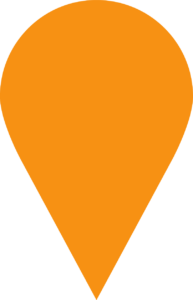The Cultural Data Project |  Nashville, TN
Nashville, TN
Objectives
- Use the data to go beyond simple financial reporting and understand what makes arts and cultural organizations succeed
- Look for connections between financial and programmatic data to help arts and cultural organizations become more effective
- Identify peer organizations with similar business challenges from within their community for peer-to-peer mentoring opportunities
Findings
- Began to create a new, more meaningful taxonomy to categorize arts and cultural organizations rather than the commonly used framework for categorizing nonprofits from the United States IRS
- Used cluster analysis to generate data-driven segments of arts and cultural organizations to uncover patterns
- Found promising correlations between potential key drivers and success key performance indicators
Question
The Cultural Data Project (CDP) not only collects financial and programmatic data from over 11,000 arts and cultural institutions across the U.S., it delivers that information back to the organizations themselves, to the funders who support them and into the hands of advocates and policy makers who believe in them.
Each year, organizations ranging from small, all-volunteer dance troupes to multi-million dollar museums across the country submit data to CDP as part of the grant application process with public and private funders. This means CDP has collected a broad dataset with 50,000 records, including up to 1,200 data points on each organization. CDP wondered if their extensive financial and programmatic data could give them a better understanding what helps arts and cultural organizations succeed and therefore enable CDP to create more effective tools and training.
What Happened
At the Teradata PARTNERS DataDive, Data Ambassadors Frank Saeuberlich and Elena Zhukova led an international team of volunteers from Moscow, Germany, the United States and Singapore. The team dug into this broad dataset to see what attributes of organizations (size, interest area, number of funding streams) correlated with measures of financial success.
The team started by looking at the dataset as a cross-disciplinary whole, but didn’t find any meaningful correlations at first. The team moved on to use cluster analysis as a way to identify nonobvious groupings of the organizations based on the data itself. The team hoped this would help surface any underlying patterns driving the organizations’ financial performance.
Using the data, the team grouped the organizations into five segments and developed a new taxonomy for them. Suddenly, patterns started to appear, revealing promising correlations between CDP’s existing key performance indicators, commonly-used metrics that look at “broad brush” measures of financial health and that are calculated from fields in their dataset.
This figure shows the financial success of the five clusters that resulted from the CDP Team’s segmentation. The top panel shows the five clusters, sized by how many organizations fall into each cluster. Below are bar charts of the financial success of each cluster, with the bars on the left showing overall financial success and the bars on the right being color-coded by the types of arts organizations present in each cluster.
What’s notable is that “cluster-4,” one of the larger clusters, is the one cluster that does not achieve financial success. This cluster is a mixed cluster, not dominated by any one type of organization. They are similar in terms of a set of pre-chosen variables related to events and attendance. Further investigation is needed to understand whether these commonalities are related to the finding that the organizations in this cluster have a lower profit margin than organizations in the other clusters.
What’s Next
CDP will now be refining the clusters and will incorporate the new taxonomy into their business practices, ensuring organizations are more meaningfully categorized into peer groups. They will also be digging deeper into the clusters themselves, understanding how these cluster groups translate given their own understanding of the arts sector and looking to see what can be done to help “cluster-4” organizations perform better.
As a result of the volunteer team’s work, CDP has an opportunity to strengthen its business practices to better categorize the arts and cultural organizations participating in the initiative into more accurate peer groups. This is the first step in providing targeted services to organizations and enabling them to benchmark themselves to understand how they’re doing in relation to their peers.
“We realized there are other ways we could be grouping our organizations to create peer learning communities,” said Arin Sullivan Director of Programs and Client Services. “By creating a new taxonomy, we are able to offer something that makes more sense for our organizations’ specific needs.”
A huge thanks to our sponsor, Teradata Cares, for making this DataDive possible and for their generous support of DataKind.




